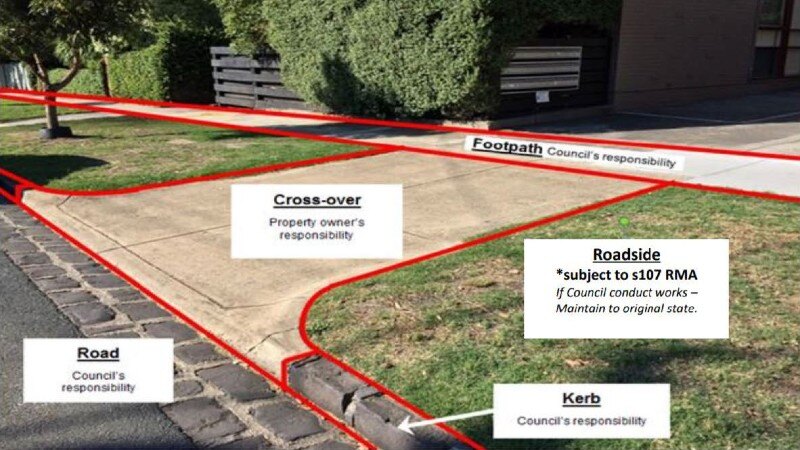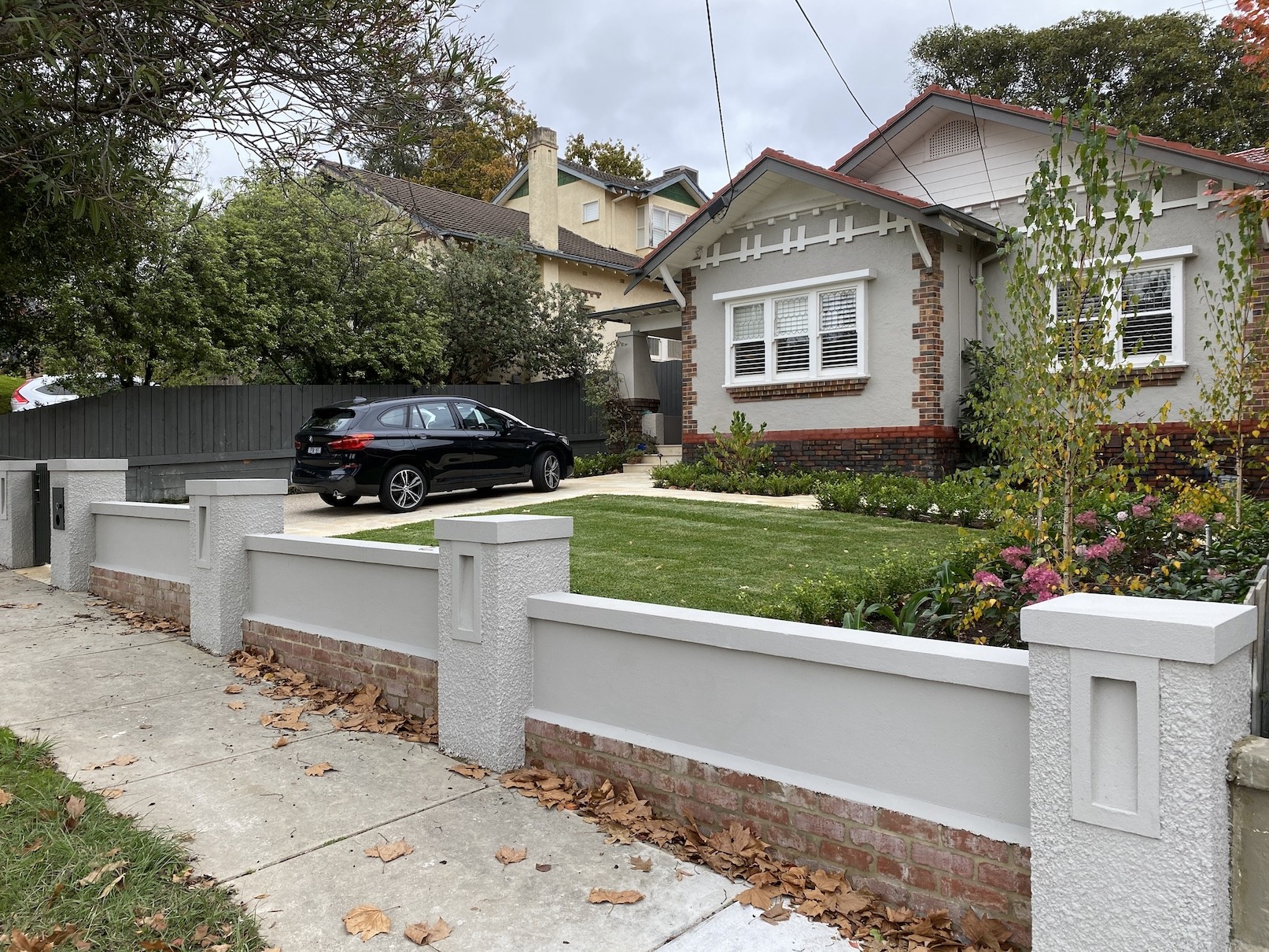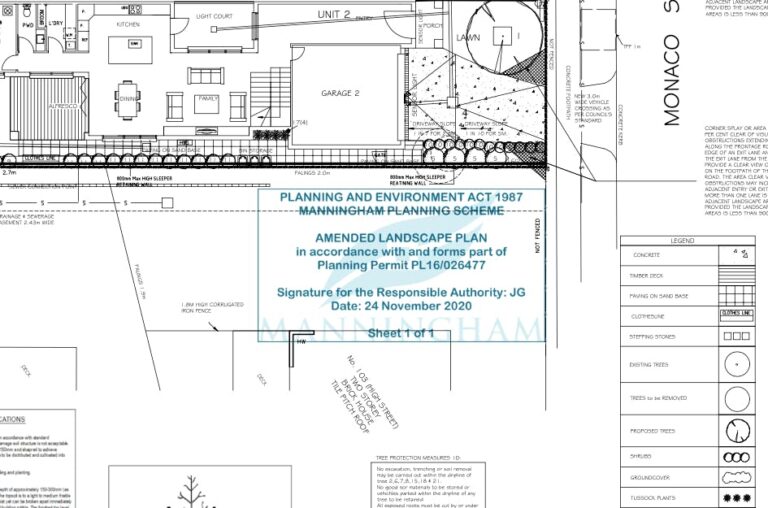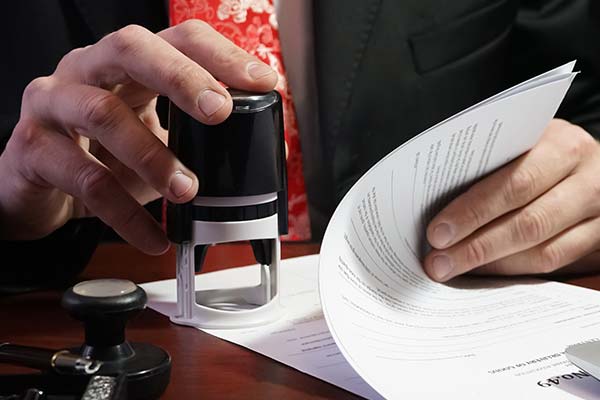Asset Protection Permits: will I need one when landscaping?
June 5th, 2024
4 min read
By Andrew Whyte

Are you about to embark on a landscaping project? Have you received a letter from your local council telling you that you have to apply for an Asset Protection Permit? Are you wondering what this all means? Would you like some help with the process of getting your permit?
As landscapers with over 30 years of experience, we've had a lot to do with Asset Protection Permits. We'd love to share our knowledge with you in this article. Once you've read it, you'll know what Asset Protection Permits are, why they exist and how to obtain one.
When you get to the end you should be able to handle the whole thing, easily and simply.
What qualifies as a Council Asset?
The first question is obviously what is a "Council Asset"?
While individual assets may vary from council to council, many assets commonly fall under the concern of all councils. These include:
- footpaths
- nature strips
- vehicle crossings
- kerbs
- channels
- drains
- roads and laneways.
Why does the council value these assets?
Many of these assets have practical functional value for the community, homeowners, etc
Some might also have additional historical value - such as an original bluestone laneway from the 1800s for example.
Whatever their function, all these assets were installed at considerable cost. They also need to be repaired and maintained and if damaged beyond repair they would be expensive to replace.
This is why councils have implemented an Asset Protection system that requires permits for certain works that have the potential to damage these assets.
Why do you need an Asset Protection permit?
Obviously, councils want to protect their assets from being damaged. And if they do get damaged, they want to ensure they are repaired at the expense of the person who damaged them.
So, the councils have implemented an Asset Protection Permit system. When they are advised through their Planning and/or Building department that certain works are being carried out on a property that have the potential to put a Council Asset at risk they will flag a permit will be required.
They advise you of this in writing in advance to ensure that you obtain the permit before you start the work.
The permit also requires you to pay a bond. This ensures the council will have the funds required to repair the asset should you damage it and not repair it yourself.
What does an Asset Protection Permit cost?
Asset Protection Permit fees vary from council to council. The below screenshots were taken from the Boroondara and Moonee Valley websites in May 2024.
You will see the permit requires payment of an application fee as well as a bond. The bond is retained by the council until the works are complete and an inspection can verify the Asset has not been damaged. If all is well, the bond is returned.


Each council charges different fees and differing levels of bond depending on the scale of the planned project and what the works may entail. Obviously the greater the risk of damage the higher the fees and bond required.
How to apply for an Asset Protection permit
Applying for an Asset Protection Permit is relatively simple.
Go to your local council's website. Search for "Asset Protection permit" or similar term. You will find an application form for the permit to complete.
IMPORTANT: you will be asked to take photos to accompany your application showing the current condition of any possibly affected asset such as the nature strip, footpath etc. It is very important that your photos capture any existing damage before submitting your application to the council. You want proof that this damage was present before your landscaping works took place, otherwise you may be incorrectly blamed for it.
Full procedure for Asset Protection Permits
Apply online – as outlined above, first go online to your council's website and apply for your permit.
Pay the Bond – if a bond is required, your council will send you an invoice to pay before the work commences.
Repair as needed – if any damage to council assets occurs during your landscaping works, you will need to repair it. Now this may require you to apply for another permit to undertake these repair works, which can be frustrating. For example, if you have broken or cracked the footpath, a permit will be required to re-concrete the damaged section. Pedestrian control measures may also need to be put in place depending on the scale of the works involved.
Bond refund – If there is no damage to any council assets or you have repaired any damage, you can revisit the council website and fill in the application for a bond refund.
Final inspection – If any repair works have been undertaken, the council will arrange an inspection and notify you if the repairs are acceptable. If all is well, you will receive your refund. As always it may take some time to actually receive your refund so please check with your council what that timing is likely to be.
Who pays for repairs to council assets?
If damages to council assets occur during your landscaping works, who pays for the repair will depend on exactly what occurred, how it occurred and who will be taking responsibility for it.
Generally, your landscaping contract or quotation should detail exactly what damages are covered. If it is clear that the landscaper has caused the damage they will have to fix it unless there is a clause in your contract that explains otherwise.
For example, your contract may state that a crossover leading from the edge of the road to your property needs to be accessed to allow trucks to drop off materials at the site. The contract may specify that no guarantee can be given that the concrete crossover will not crack as there is no other way to deliver the materials. In this case, the cost for the repairs to the crossover would be borne by the house owner and not the landscaper.
Will you need a Traffic Management Plan?
The simple answer to this question is - not always!
Traffic management plans are separate from asset protection and relate to works adjacent to the road reserve. Typically, you will need a traffic management plan to accompany a vehicular crossing permit or a building permit for a front fence or rear fence on a laneway, if the construction of the fence is likely to disrupt pedestrian and/or vehicular traffic.
However, asset protection permits are often required when there is no work adjacent to the road reserve. This is often the case with heavy machinery entering the construction site which may damage the footpath, vehicular crossing etc.
Timing, validity of permits, etc
Note that the time it takes to process and issue an Asset Protection Permit can vary from council to council. Times can vary from 7, 10 or even 14 days to process the application and issue the permit.
The permit itself may request that works must be started within 12 months (or a similar time) of the permit being issued otherwise the permit may expire. Once the works have commenced the permit may remain valid for a nominated period, such as 2, 3 or more years.
It's important to check all these details when applying for your permit so you don't get caught out by running out of time.
If you would like to know more details about Asset Protection Permits, you might find this document helpful. It's from the Victorian Local Government website: Good Practice Guide for Asset Protection Permits
If we can be of any assistance with any other questions you might have regarding Asset Protection Permits please feel free to contact us by phone or email.
Articles covering Landscape Design and Construction in Melbourne...
What a landscaper might not tell you (but they should)
What to do next after you engage your landscape designer
How to calculate an accurate budget for landscaping
Founder of Whyte Gardens
Topics:



